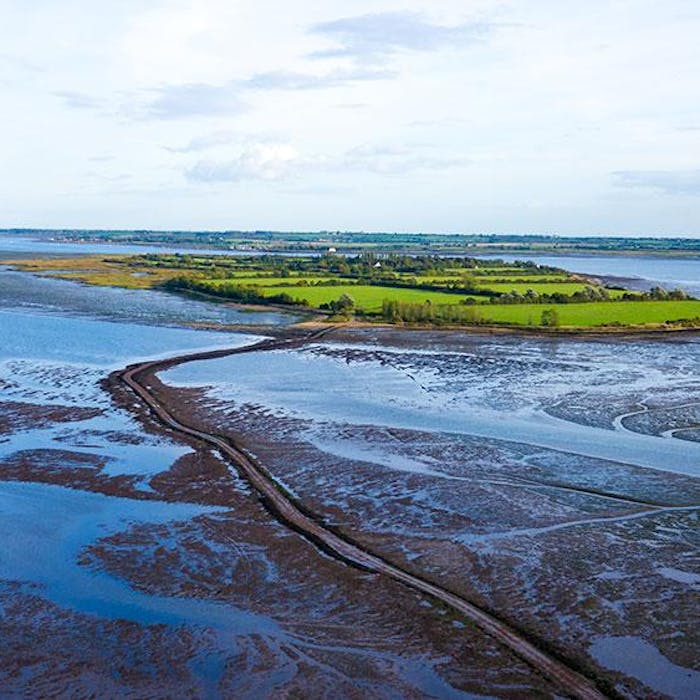
Osea Island - an offshore Essex retreat
The coast of Essex is not often recognised as being the longest of any British county. At over 350 miles on account of its many inlets and river estuaries, it also includes a number of remote and unusual islands and places only reachable at low tide. One such is Osea Island and its causeway across the River Blackwater estuary.
Osea Island, formerly also Osey, is an inhabited island in the estuary of the River Blackwater. It is approximately 380 acres (1.5 km2) in size and is connected to the north bank of the river by a causeway, covered at high water. Nearby are Northey Island, about a mile to the west, and Mersea Island, about five miles to the north east. The name "Osea" means "Osyth's Island" and thus the name is tautological.
For its small size and relative obscurity, the island has quite some famous history. In 1913 the British Deperdussin Aeroplane Company tested a newly developed seaplane at Osea. It was a single-engined seaplane with two large floats, and flew from the deep water channel to the south of the island.
Osea Island was also the site of a Coastal Motor Torpedo Boat base during the First World War and 2,000 sailors were billeted there, mainly in temporary huts which were removed after the war. In the Second World War, the island was taken over by the British Army.
Osea Island has been bought and sold by various owners over the years, and it is currently owned by Nigel Frieda, a music producer. There is an imposing Manor House, recording studios, and a small group of cottages. Previous owners have included a member of the Charrington brewing family, Frederick Nicholas Charrington, who founded the Tower Hamlets Mission in the 1870's, and who established a drug and alcohol treatment centre on the island. His wife made it a retreat for wealthy alcoholics on Osea Island.
From 2005 to 2010, it was a rehabilitation centre specialising in the treatment of addiction problems and mental health called the Causeway Retreat. Those who stayed included singer Amy Winehouse. The island is now used by musicians as a private retreat to record albums. It has its own fully equipped recording studio as well as ample accommodation. It is also available for holiday stays.
The 1979 Children's Film Foundation film Black Island, produced by Kingsgate Films was shot on and around the island, and concerned two young castaways who are captured by escaped convicts on the island and their subsequent bids to get free.
Both the 1989 television adaptation of Susan Hill's novel The Woman in Black and the 2012 film adaptation of the same used the island's causeway as the location for the fictional Nine Lives Causeway. It has also been used in other TV programmes and films.
Further reading
Links to external websites are not maintained by Bite Sized Britain. They are provided to give users access to additional information. Bite Sized Britain is not responsible for the content of these external websites.
